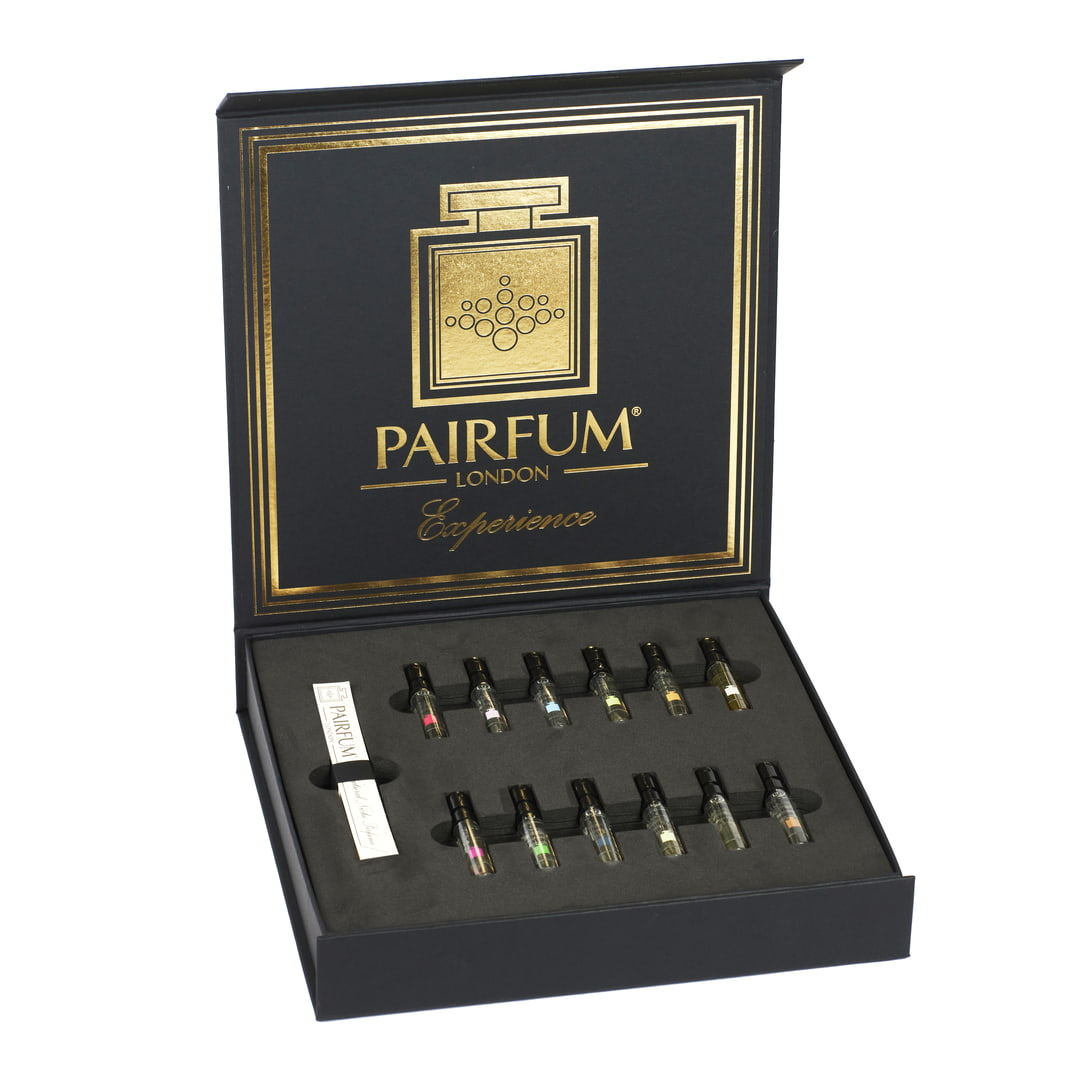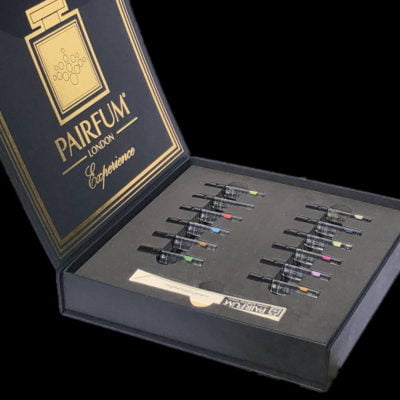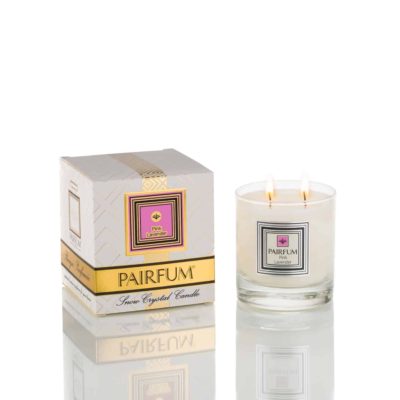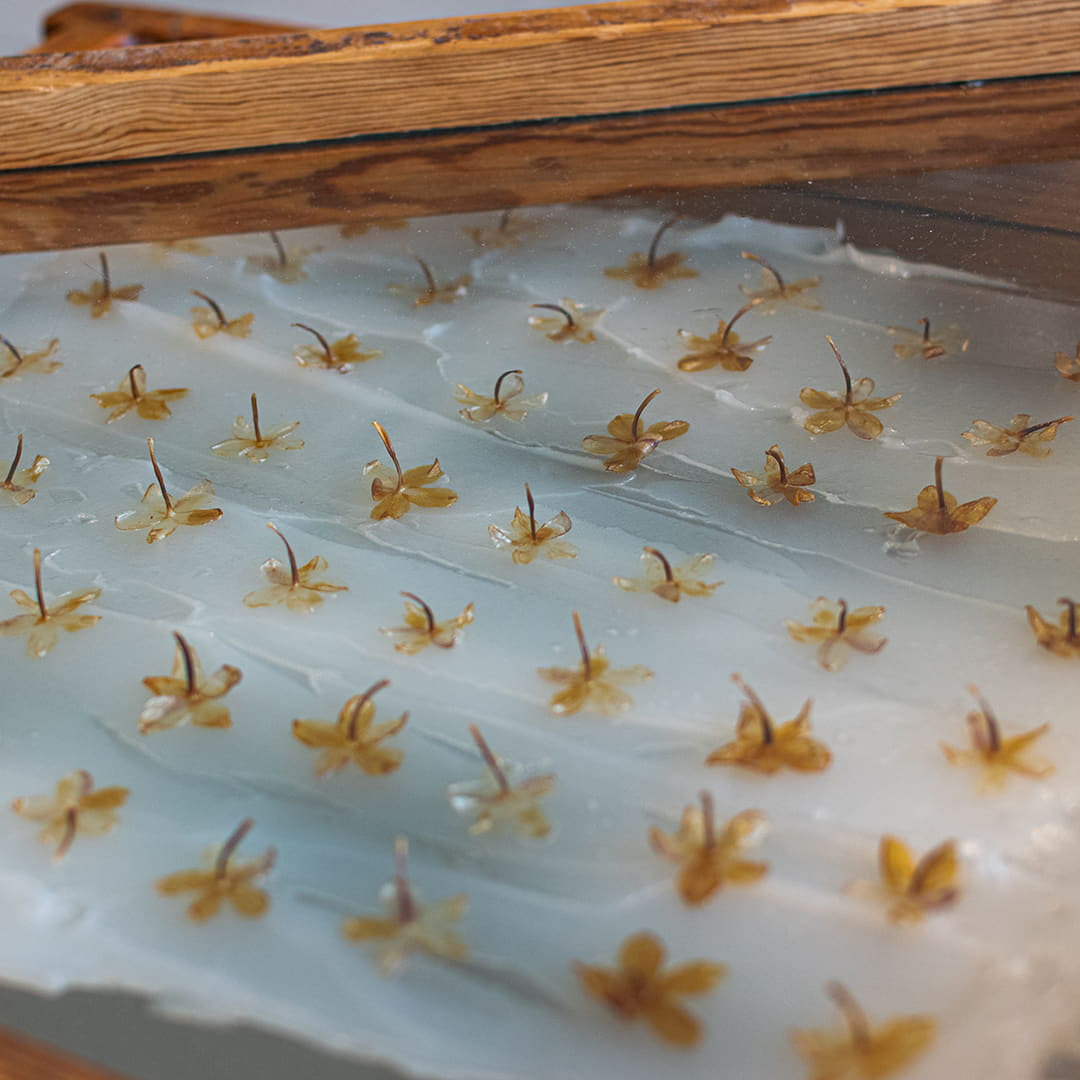Introduction:
Perfumes are more than just a scent; they are an expression of your personality. Understanding the key notes in perfume can help you find the perfect fragrance that resonates with you.
In this comprehensive guide, we will delve into the art of identifying top, middle, and base notes in perfumes. Understanding the complex blend of fragrance notes and ingredients that make up a fragrance can be daunting for even the most experienced perfume enthusiasts.
Perfume notes are often compared to musical notes as they come together to create an aromatic symphony. These notes are categorised into three sections: top, middle and bottom notes.
In order to fully appreciate and enjoy the fragrances you wear, you need to understand the different types of notes and recognise the characteristics of each note.
At Pairfum London, our in-house perfumer continuously creates a variety of unique and memorable perfumes. Our fragrant collection includes a wide range of niche perfumes, diffusers, scented candles, prebiotic lotions, room sprays and much more.
In this blog, we present tips and tricks for identifying the key notes in perfume. Whether you are a seasoned perfume connoisseur or just starting to explore the world of fragrances, these tips will help you develop a deeper understanding and appreciation of perfumes.
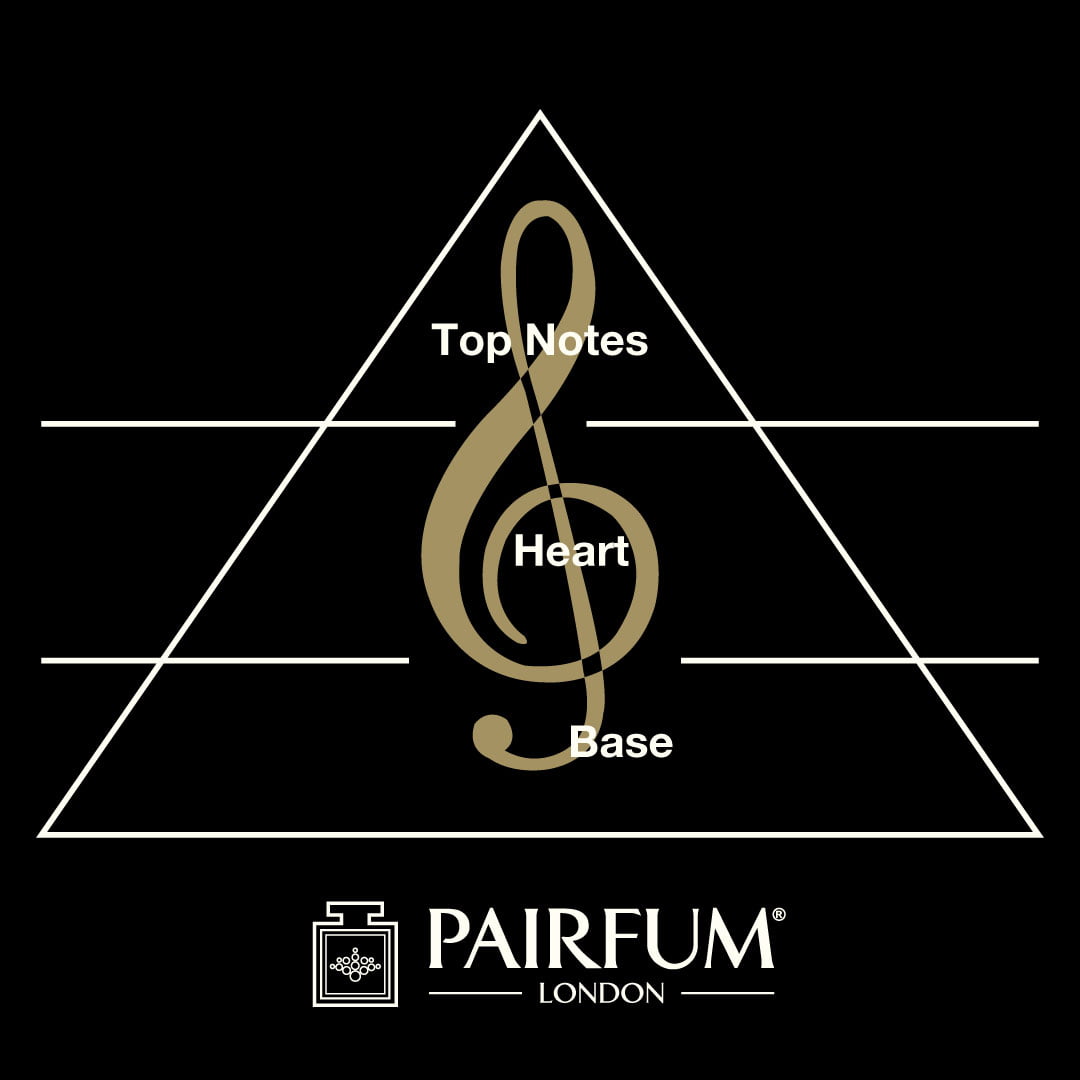
What are Perfume Notes?
Perfume notes are basically the ingredients that make up a fragrance. Perfume artisans carefully select each note to craft complex and pleasant aromas.
These fragrance key notes can be separated into a three-tiered pyramid: top, middle and bottom.
Understanding perfume notes is crucial for anyone who wants to find their signature scent.
Let’s understand these notes further.
Understanding the Top Note in Perfumes
When you first apply a perfume, the initial scent that greets your senses is known as the top note. These are the “opening chords” in the aromatic symphony of a fragrance. These form the top layer of a fragrance and they play an essential role in the first impression made by the perfume.
Common top notes in perfumes include citrus elements like lemon and bergamot, as well as light floral or fruity essences like lavender and apple that make a strong impact on the wearer.
These notes are designed to make a strong, memorable impact but generally last for only five to fifteen minutes. Understanding the top note is crucial for capturing that all-important first impression of a fragrance and to provide you with a memorable starting point for your fragrance.
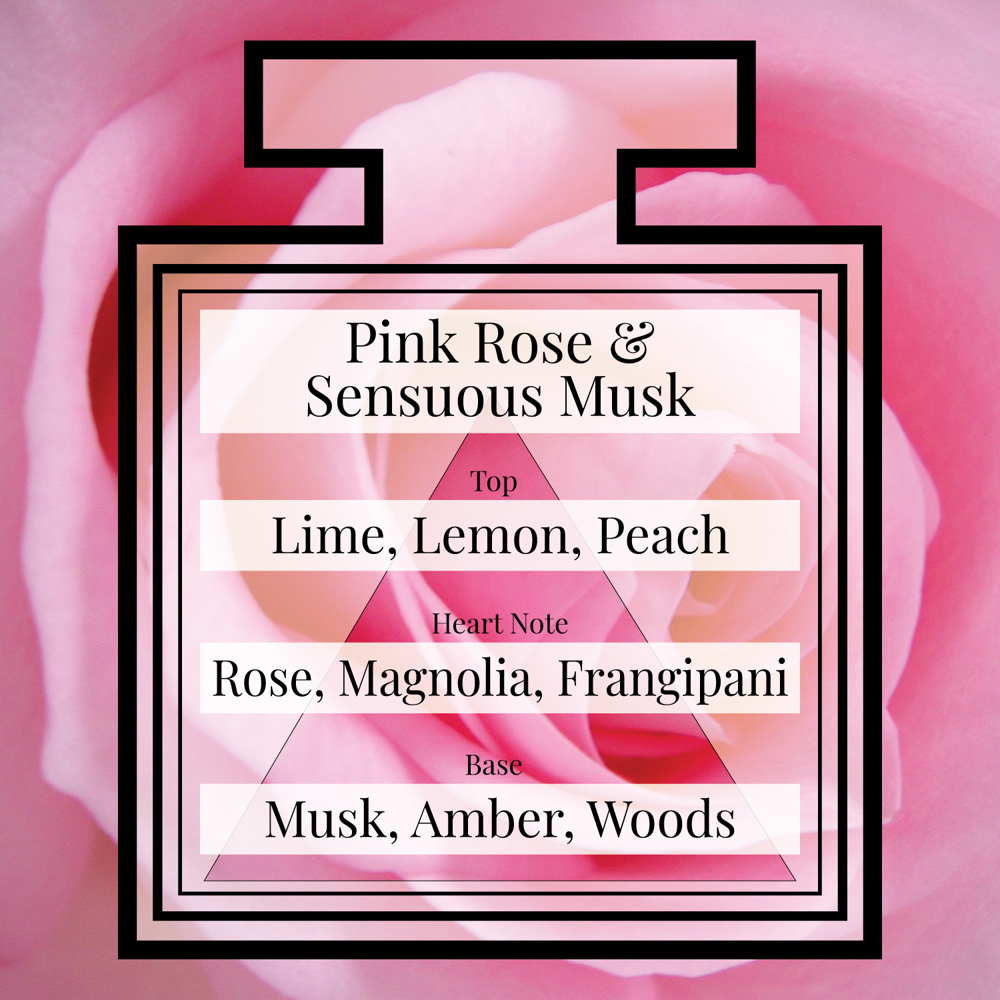
The Importance of Middle or Heart Notes
After the dominance of the top notes fades, the middle or heart notes start to unfold. These notes make up the core of the perfume and often last much longer, sometimes for several hours.
To avoid confusion, the heart notes are present from the very first instance you sense the perfume. However, they are overpowered by the top notes and yet they do contribute significantly to how you perceive the top notes (as do the base notes).
Middle notes in perfume often include floral elements like jasmine or rose, and can also feature spicy notes such as nutmeg or cinnamon. They serve as the heart or core of the perfume that connects the light top notes and the deeper base notes, offering a more rounded and complex scent profile.
Recognizing the characteristics of middle notes can deepen your appreciation and understanding of a fragrance’s longevity and complexity.
Deciphering the Base Note in Fragrances
These notes form the foundation of a perfume. Base notes are the final layer in the aromatic structure of a perfume, providing depth and solidity to the fragrance.
These notes kick in about 30 to 45 minutes after application and can last for several hours, sometimes even an entire day. Although present from the beginning and influencing how you perceive the fragrance from the very first instance, they become more recognisable from teh 30 minute mark, typically.
Common base notes in perfume include rich, robust elements like woods (sandalwood, patchoulie,…), gourmands (e.g. vanilla, caramel, …), animal notes (e.g. musk) or amber.
Understanding the base notes is essential for anyone interested in the long-lasting impact of a fragrance.
One key feature of base notes is that are usually the note that lingers on your skin. An example of a base note that has fantastic ‘substantivity’, i.e. the ability to stay on your skin for a long time, is an ingredient called ‘oud’. The substantivity of oud makes it the single most popular ingredient in the Arabic region due to the enormous heat the region experiences.
No matter your favourite key note preference, find your perfect perfume in our amazing collection of niche fragrances.

Tips for Identifying Key Notes in Perfumes
1. Determine the Notes
One of the best ways to identify the different notes in a fragrance is to smell it at different stages of the dry down.
The dry down is the process of the fragrance evaporating and developing on your skin. When you first apply a fragrance, focus on the initial scents and ingredients that you smell, these are the top notes. Are there any particular ones that you can pick up? As the assistants in the store to guide you by listing the ‘top notes’ only. Hearing the ‘heart’ or ‘base’ notes will only confuse you at this stage.
After about 15-30 minutes, the middle notes will start to develop, and you’ll notice a shift in the scent profile. Now is the ideal time to ask for the heart notes.
Finally, from an hour onwards, the base notes will become more prominent, and the perfume will have settled into its final form.
2. Recognise the Note’s Characteristics
Once you have a basic understanding of the different types of notes in perfumes, you can start to recognise their characteristics.
You’ll notice that citrus notes are typically fresh and bright, while floral notes are typically delicate and romantic. Spicy notes tend to have a warm and comforting quality, while woody notes can have a grounding and earthy quality. With Gourmand notes you are typically reminded of food item
When choosing your signature scent, find the notes that resonate with you and suit your personality and tastes.
Check out our perfume experience box to sample a variety of exquisite aromas.
3. Analyse the Fragrance Families
Fragrances can also be grouped into different olfactive families. Here are the main ones:
- citrus
- floral
- fougere or aromatic
- oriental
- woody
- chypre
Each family has its signature notes that are commonly used and define the perfumes within that family.
Floral fragrances typically have a strong presence of notes such as rose, jasmine, and lavender. Vanilla and spicy notes, e.g. clove, cinnamon, tend to dominate Oriental fragrances. With woody fragrances, you’ll find notes such as cedarwood and sandalwood.
Fragrance Wheel
The fragrance wheel is an invaluable tool designed to simplify the complex world of scents into an easy-to-understand visual guide.
Created by Michael Edwards in 1983, this wheel categorizes various fragrances into the different main olfactive families and then breaks it down further breaking them down into sub-families for more nuanced identification.
The wheel serves as a roadmap for both novices and connoisseurs to explore, understand, and articulate the wide array of scents available. To use the fragrance wheel, start by identifying the broader family that appeals to you, and then delve into its sub-categories to find scents that resonate with your personal preferences.
Whether you’re a perfume aficionado looking to expand your olfactory vocabulary or a beginner seeking to find your signature scent, the fragrance wheel offers a structured approach to navigating the intricate and fascinating landscape of perfumes.

4. Create a Personal Fragrance Library
As you start to become more familiar with the different notes and families of perfumes, you can create a personal fragrance library for reference and comparison. This can be a physical collection of perfumes or a digital collection of notes and observations.
Keeping a record of the fragrances you have tried and what you liked and didn’t like about them can help you to refine your fragrance preferences and make more informed decisions when choosing new fragrances to try.
5. How to Smell Perfume?
When testing a new perfume, it is essential to know how to smell it correctly. Avoid smelling too many fragrances in quick succession, as this can overwhelm your olfactory senses. Take a break and smell something neutral, to cleanse your palate between scents.
6. Fragrance Strength and Longevity
The strength and longevity of a perfume depend on its concentration.
Eau de Parfum (EDP) is stronger and lasts longer, usually around 6-8 hours, compared to Eau de Toilette (EDT), which generally lasts between 1-3 hours.
Knowing the strength can help you choose a perfume that suits your needs, whether you’re looking for a long-lasting scent or something lighter.
7. How To Use A Smelling Strip?
This is a practical tip that can be useful for those of our readers who are new to the world of perfumes.
Smelling strips are a useful tool for identifying key notes in a perfume. To use a smelling strip, simply spray the perfume onto one end of the strip and wait a few seconds to allow the initial burst of alcohol to dissipate.
Initially, you’ll smell the top notes. As time passes, the strip will reveal the heart and eventually the base notes, giving you a complete olfactory journey of the fragrance.
When you meet a perfumer or a fragrance connoisseur, you will probably notice that they hold a few ‘smelling strips’ in their hand, like a fan, and repeatedly smell them while speaking with you. Notice that these smelling strips normally contain a code or name and that they do not touch the fragrant end of the smelling strip with the nose or hands. Equally, a perfumer never allows the perfumed tips of the strip to touch to avoid any form of cross-contamination or ‘muddling’ of the perfumes.
You may also notice that their arms are like ‘living smelling strips’. Perfumers will regularly use these to evaluate how the note unfolds over time.
8. Frequently Asked Questions
Why do perfumes smell different on different people?
The way a perfume smells can vary from person to next due to individual skin chemistry, micro-flora, diet and the weather or climate. These factors will also influence how the perfume notes evolve over time on your skin.
How can I make my perfume last longer on my skin?
To make your perfume last longer, apply it to areas of your body that are covered with clothing, like the arms or chest.
You can also apply an unscented lotion or body oil first and then layer the perfume over the top. The oil will bind the fragrance to your skin to allow it to last longer.
Should I Spray My Perfume On My Skin Or My Clothes?
The ideal place to apply perfume is directly onto your skin, specifically on pulse points like the wrists, behind the ears, and the base of the throat.
Spraying perfume on clothes can sometimes lead to stains and may not evolve the same way it does on your skin. However, some people prefer to spray it on their clothes to avoid skin irritation.
Can Perfume Be An Aphrodisiac?
While there’s no scientific evidence to confirm that perfume can act as an aphrodisiac, many believe that certain scents can evoke feelings of attraction or arousal.
Scents like vanilla, musk, and certain floral notes are often cited as having aphrodisiac qualities. Choosing a perfume with these notes might add an extra layer of allure.
How Long Can You Store Perfume?
The shelf life of a perfume can vary depending on its composition and how it’s stored.
Generally, perfumes can last anywhere from 2 to 5 years, if stored in a cool, dark place. Over time, exposure to light and temperature fluctuations can degrade the quality of the fragrance. If you notice a change in color or scent, it may be time to replace your perfume.
More FAQs?
We have a section on our website that answers the most Frequently Asked Questions when it comes to perfume and we invite you to explore it.
Conclusion:
We hope you enjoyed our introduction of how to Identify the Key Notes in Perfume.
The next step is to start discovering and exploring perfume differently. One obvious thing you may have noticed when reading this article is that you should take more time to smell a fragrance to see how it unfolds over time and whether you love how it smells and develops on your skin.
Ask yourself these questions:
- Do you still love the perfume when you are at home?
- Do you like how it smells on you at the end of the day?
- Does it only work for particular occasions, seasons, locations or times of the day or is it a note that love throughout the entire year?
These questions are impossible to answer when you run through the Duty Free to catch your flight or when you browse the perfumery isle in your favourite store.
Instead, you should do the following:
- keep the smelling strips / perfume you are testing apart so that their scents to mix
- take your time and don’t smell too many
- select only a few and ask for samples to take away
- then use the samples to consciously wear these notes for a week.
This sounds a bit difficult. Doesn’t it!
We have a much simpler solution for you: The Perfume Experience Box.
It contains 12 x Eau de Parfum Intense and each perfume vial contains enough fragrance to wear it daily for two weeks, enough time to fully experience the perfume and not just initially on a smelling strip in the confusion of a perfumery.
With the Perfume Experience Box, you will find it much easier to identify the key notes in a perfume and to discover the fragrance that is ideal for you or for a specific occasion or season.
Choose Pairfum London to Experience Niche Fragrances
Are you looking for a unique and luxuriously natural Niche Perfume? We have got just what you have been looking for.
At Pairfum London, our in-house perfumer is passionate about natural niche fragrances and is dedicated to inventing new and unique perfumes to delight our customers.
With our expertise in the perfume industry, we create a wide range of fragrant products. Our collection includes exquisite niche perfumes, home aromas, skin care products and much more. Explore our stunning products and reach out to us to find out more about our offering.


